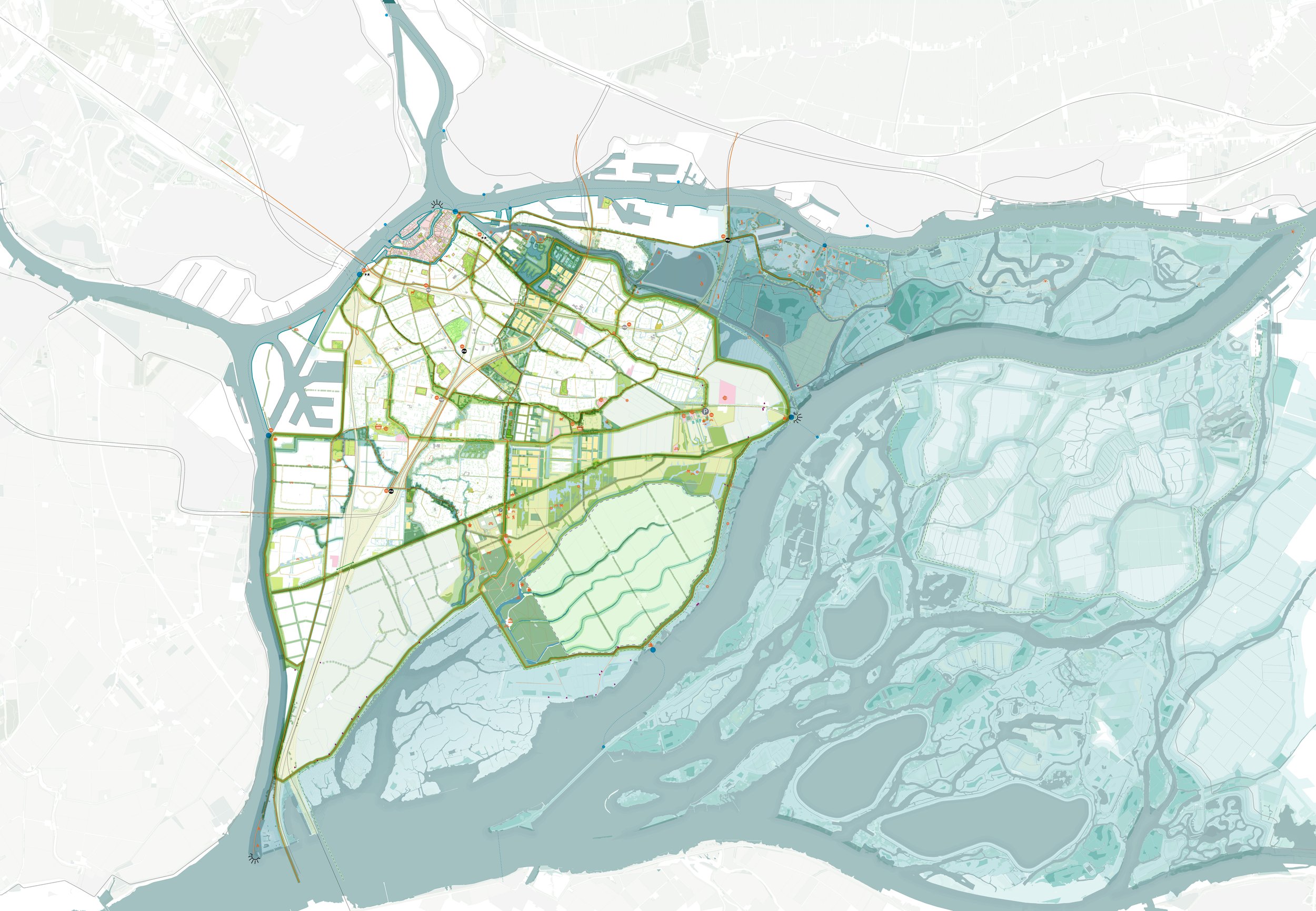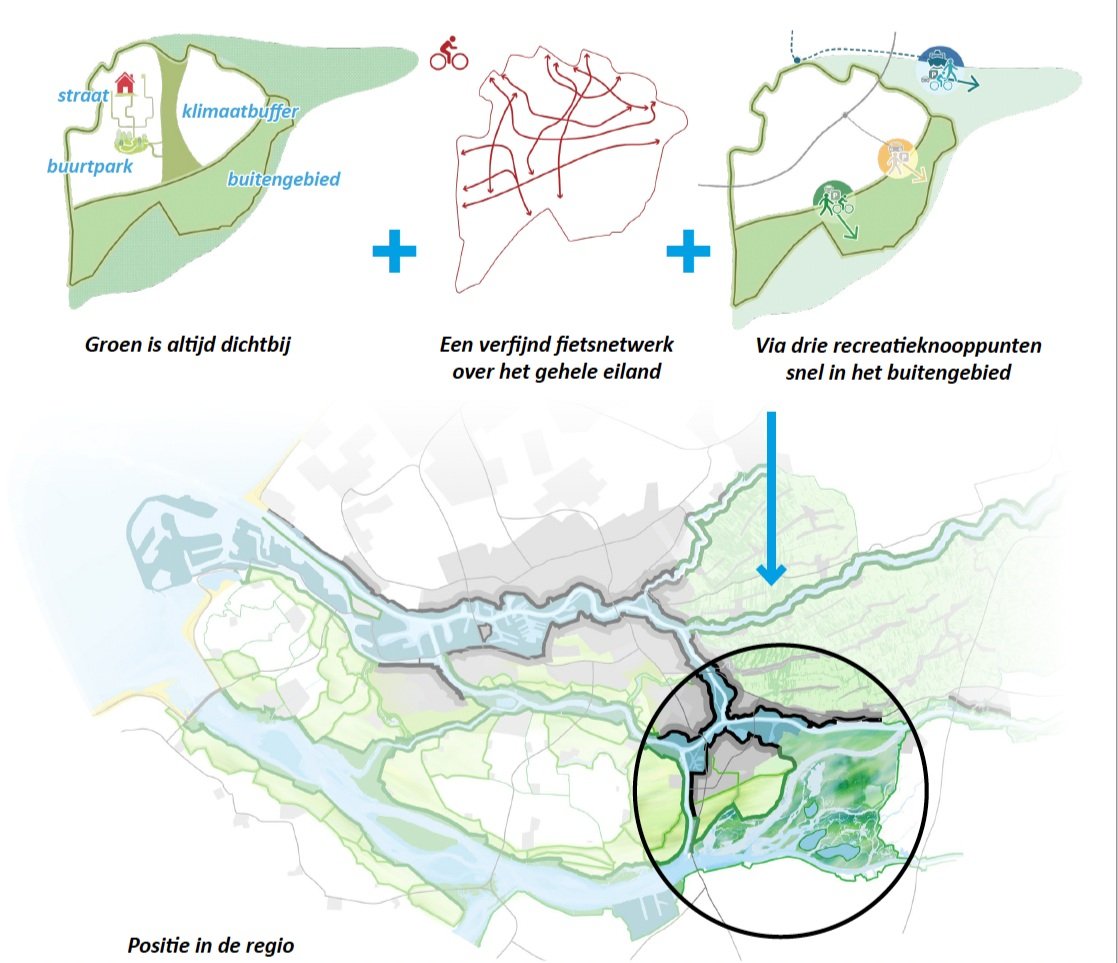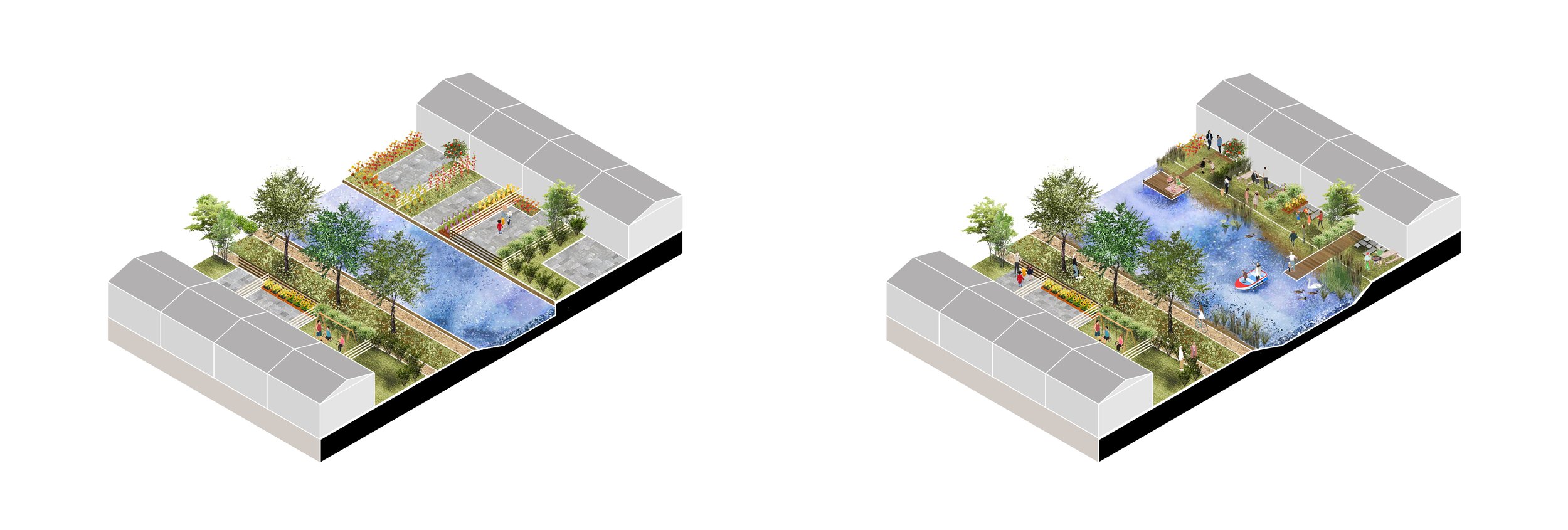
The Island of Dordrecht
Dordrecht, The Netherlands
Location | Dordrecht, The Netherlands
Year | 2020 - 2021
Client | Municipality Dordrecht
Status | Municipal strategy document, incorporated in Omgevingsvisie and Kwaliteitsboek Openbare Ruimte
Collaboration | Natuurlijke zaken
Workshops | Municipal departments , Bureau Stadsnatuur Rotterdam, multiple stakeholders
The ambition for The Island of Dordrecht and its Green and Blue infrastructure connects a healthy living environment with climate adaptation, biodiversity, and the cultural history of the island. The vision shows that robust green and blue connections on The Island of Dordrecht ensure that the city is ready for the changing climate and also remains healthy and attractive, even with urban densification.
A large part of the Dutch landscape has been shaped by both natural forces and human intervention. Building with nature is strongly embedded in the culture of the Drechtsteden. Its position in the gradual transition between rivers and delta, and a history of flooding from both the rivers and the sea, led the inhabitants to make imaginative adjustments to their homes and lands, as well as create new economic activities that made use of the water. This vision takes the rich cultural history of The Island of Dordrecht as a starting point to create a healthy living environment and higher biodiversity that can cope with more changes in the climate.
Historical map of The Island of Dordrecht (1793)
The Dutch National Park De Biesbosch is a very water-rich nature reserve area in close vicinity. This internationally recognized nature reserve is one of the most important qualities in the establishment of work and housing. With a daily tidal difference, the environment manifests itself into rich fringes around the island. It is a unique nature reserve where dynamic ecological processes take place, and special biotopes exist for many plants and animals.
The vision map
It is this nature that ensures a healthy, clean city. It is these qualities that the city of Dordrecht can make better use of as the city continues to grow. The vision, therefore, focuses on the green-blue structures at the scale level of the island. Historical landscape structures can provide a connection between the region and the neighborhood, creating a more balanced distribution between east and west. In this regard, the Dordwijkzone acts as a climate buffer.
The vision consists of three principles:
1) We strive for a green and water-rich network from our front door via green spaces in the city (such as parks, courtyards, waterways, etc.) to the larger landscape and the Biesbosch.
2) The island is increasingly equipped with a very fine-meshed network of walking and cycling paths, distinguishing between functional fast biking routes and relaxed recreational routes.
3) Three recreational nodes on the outskirts of the city form welcoming gateways to the countryside.
The blue-green infrastructures
rinciples of biotopes and habitats
Overview of the 5 most common trees on The Island of Dordrecht
The four Green and Blue Strategies form the main structure of The Island of Dordrecht and provide a framework for future development. The themes of a healthy living environment, biodiversity, climate adaptation, and cultural history form the basis of each strategy and provide inspiration to take steps toward the healthy development of the city.
• The Tidal Landscape forms the rich fringes of the island
• The historic dikes form the ribbons of which the island is built upon
• The various Killen (creeks) now mainly manifests itself as whimsical (inner dike) waterways
• De Dordwijkzone is being reinvented as a XXL central park and climate buffer
To test the principles, a number of exemplary locations have been elaborated, such as the historic Zuidendijk. By cherishing the continuity of the dike profile with priority for slow traffic, the fine-meshed network improves, benefiting the health of the city and its inhabitants. Biodiversity is increased by focusing on diversity, such as a variety of tree structures and microclimates that appear in the gradients of high/low and wet/dry. But also edible vegetation, nature-friendly edges, and bee-friendly flowery berms. The cultural history is thus part of a future climate-adaptive approach that also creates more nature.
Examplary location 'Zuidendijk’ (South part of Dordrecht)
Examplary location 'De Kleine Oostkillen’ (East part of Dordrecht)








